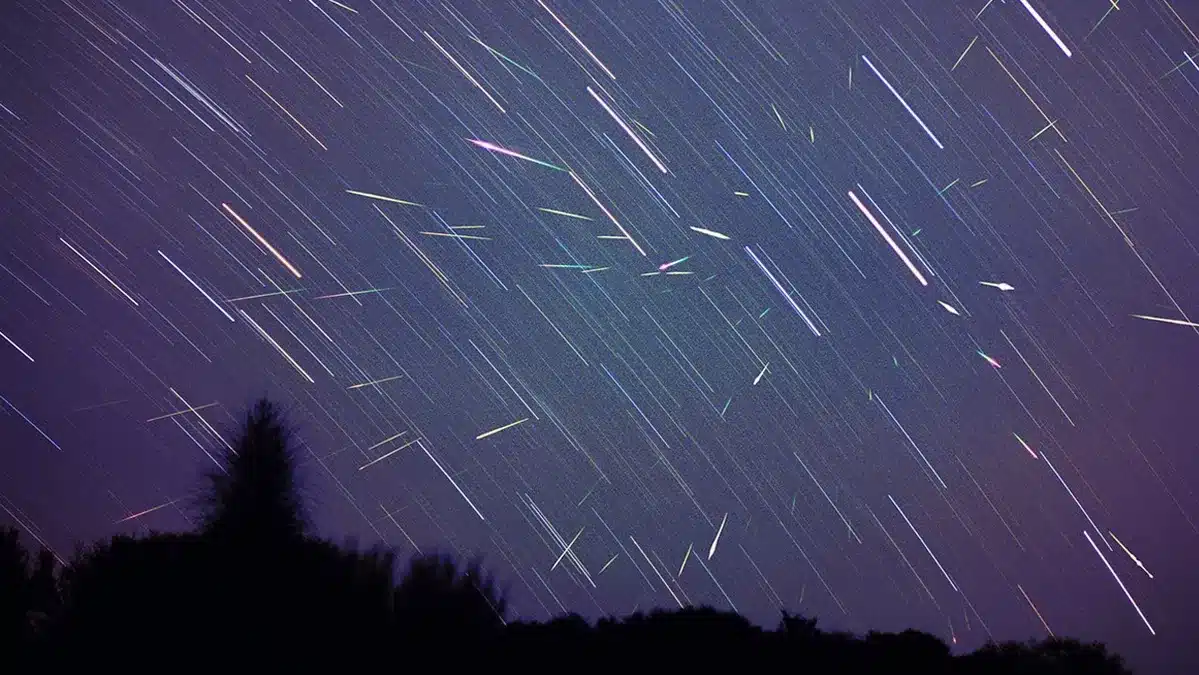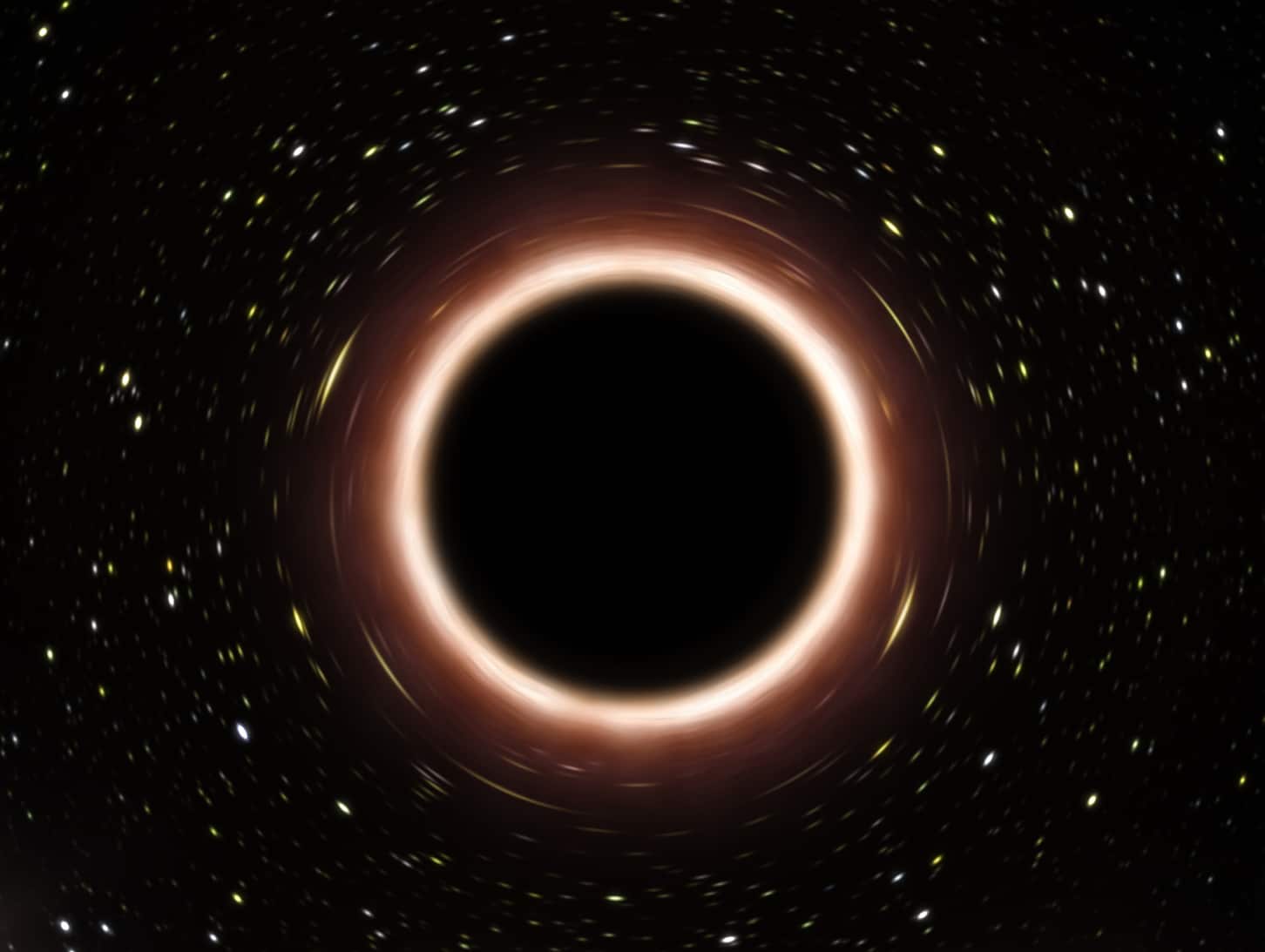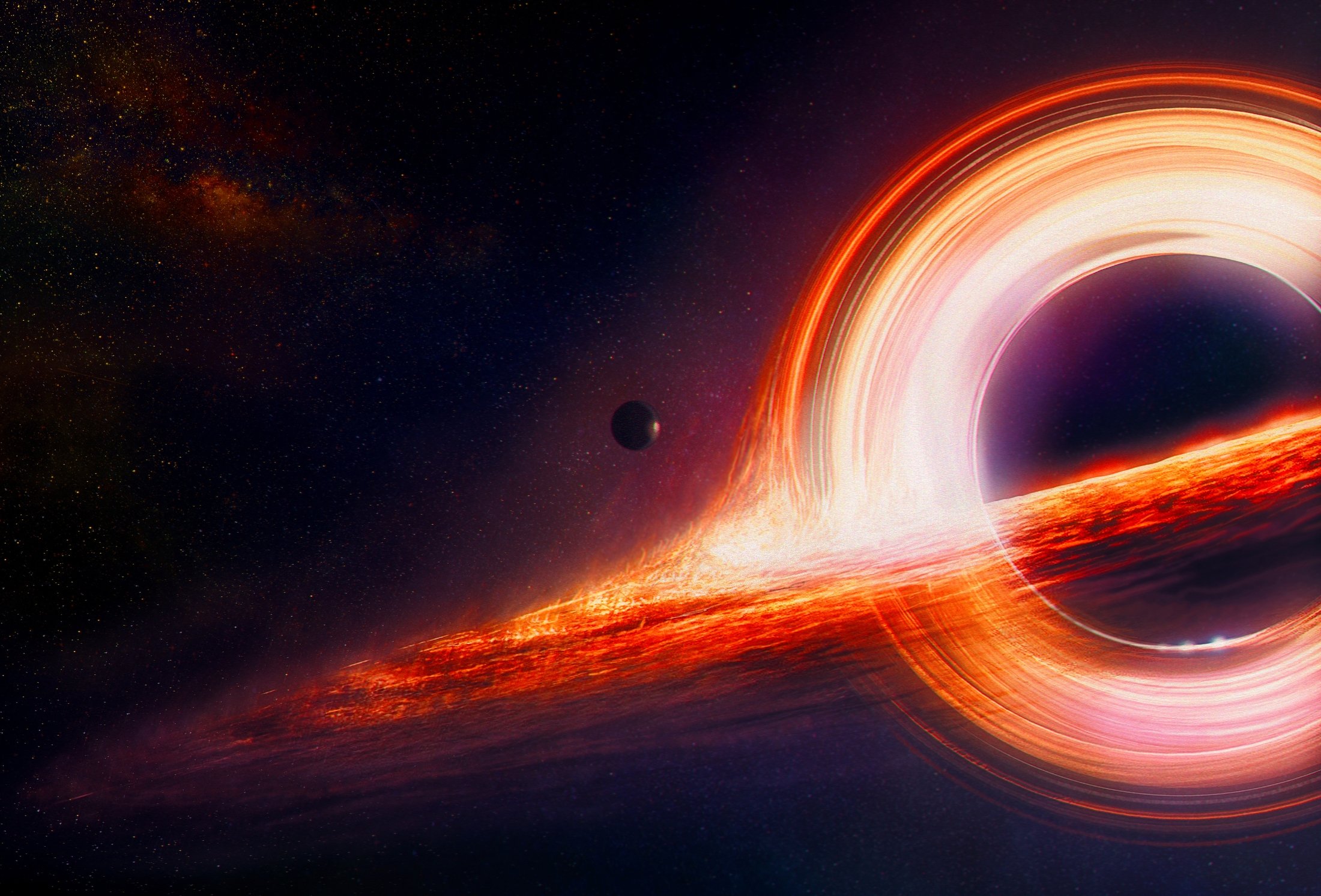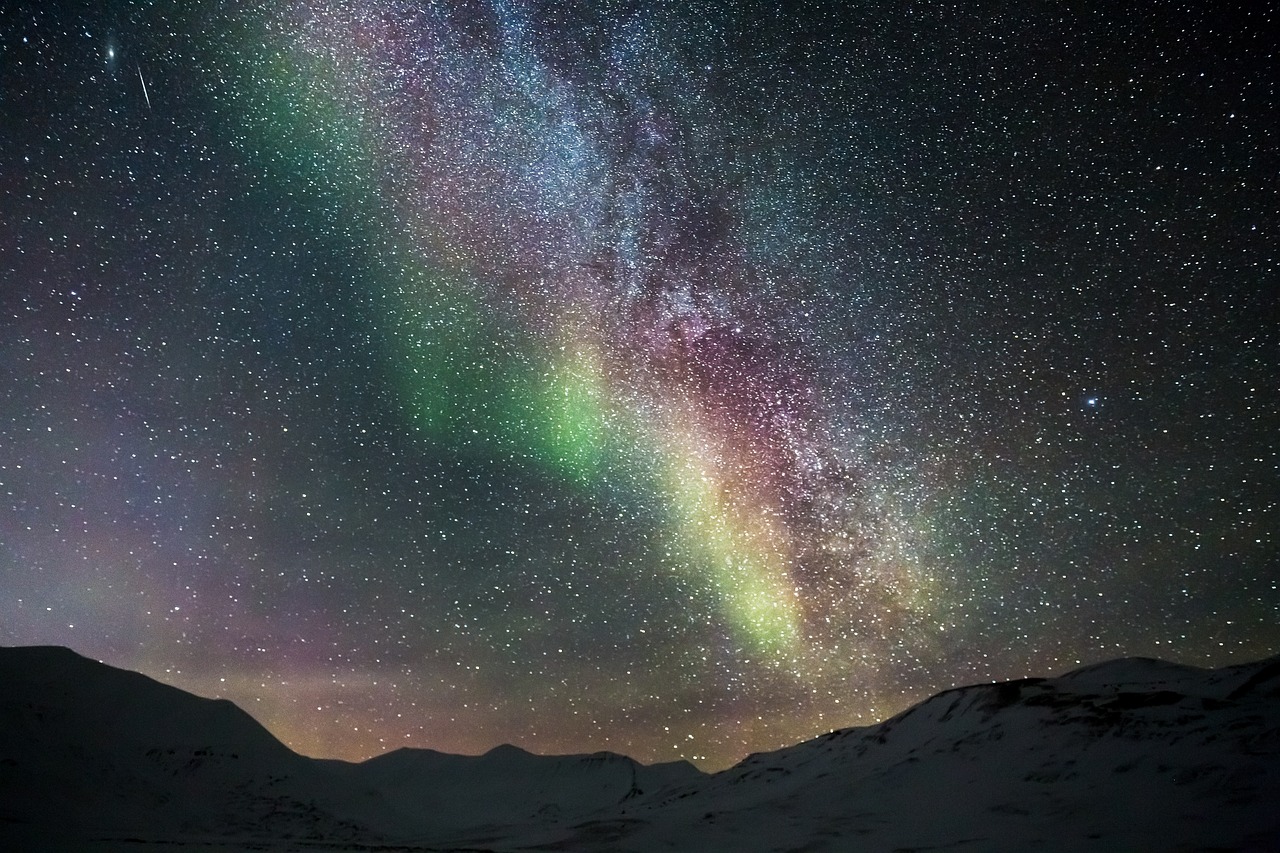Science
Keep An Eye On The Sky For The Leonid Meteor Shower This Weekend Peak On The 18th

The Leonid meteor shower, expected to deliver brilliant meteors with persistent trains shooting across the night sky, is next for end-of-year celestial spectaculars.
According to EarthSky, the Leonids have been active since early November and are scheduled to peak this weekend at 12:33 a.m. ET Saturday. Skywatchers could witness 10 to 15 meteors each hour in a spectacular display.
Those hoping to see a meteor from this shower are in luck because the moon will be in its waxing crescent phase, which means there will be less light interference than there is with a full moon, according to Dr. Sharon Morsink, a professor of physics at the University of Michigan.
The University of Alberta is located in Edmonton, Alberta. According to the American Meteor Society, the moon will be 23% full on the night of the shower’s peak.
While Saturday is the peak, the same rates of meteors can be seen a few days before and after. According to Morsink, who also administers the university’s astronomical observatory, the optimum time to view the shower would be after midnight in any time zone when the constellation Leo will be highest in the sky.
The Leonid meteor showers
She said that Leo is the radiant of the meteor shower, which is where the event appears to start.
“The most important thing is to avoid light pollution,” Morsink said. “You can still see some meteors if you’re in the city, but you’re not going to see anywhere near the number you get to see if you get out of the city.”
According to NASA, the Leonids are famous for producing meteor storms, which occur when a shower produces at least 1,000 meteors per hour.
According to the American Meteor Society, the Leonids generated 144,000 meteors per hour in 1966, setting the record for the highest number of meteors per hour witnessed in a meteor stream. The shower also produced higher-rate outbursts in 1999 and 2001, but humanity does not anticipate another storm until 2099, when the Earth is expected to collide with a dense cloud of debris from the parent comet, Tempel-Tuttle.
As the comet orbits the sun, it leaves a trail of pebbles and dust behind it, which causes the yearly Leonid meteor shower to occur as Earth passes through the debris on its orbital path.
Although a Leonid storm event is not expected this year, there is always the possibility of seeing a few more meteors than the estimated rate, according to Morsink.
“Getting out and seeing any meteor shower for the first time is always fun,” she said. “It’s just this fascinating connection we have with the entire solar system — here’s this comet far away from us that has been circling the sun for an incredibly long time, probably billions of years.” It allows us to communicate with objects that are quite far away.”
Keep An Eye On The Sky For The Leonid Meteor Shower This Weekend
According to the American Meteor Society, meteors from the Leonids are expected to be blazing in the sky until the shower’s finality on December 2.
If you are eager to see more, here are the remaining meteor showers that peak in 2023:
● Geminids: December 13-14
● Ursids: December 21-22
Full moons
There are two full moons remaining in 2023, according to the Farmers’ Almanac:
● November 27: Beaver moon
● December 26: Cold moon
The Leonid meteors are a prolific meteor shower associated with the comet Tempel-Tuttle. They are visible annually in November when the Earth passes through the debris trail left by the comet. The meteors appear to radiate from the constellation Leo, hence their name.
At their peak, the Leonids can produce a high number of meteors per hour, known as a meteor storm. This celestial event is popular among stargazers and astronomers due to the impressive display of bright, fast-moving meteors.
SOURCE – (CNN)
Science
Webb Telescope Uncovers Merger Of Two Massive Black Holes From Early Universe

CAPE CANAVERAL, Florida – The Webb Space Telescope discovered the earliest known merger of black holes.
These two massive holes and their galaxies formed only 740 million years after the universe-creating Big Bang. Scientists claimed Thursday that they have made the furthest distant detection of merging holes ever.

New Atlas – VOR News Image
Webb Telescope Uncovers Merger Of Two Massive Black Holes From Early Universe
A black hole is 50 million times bigger than our sun. The other is estimated to be similar in size but buried in dense gas, making it difficult to measure.
Until today, astronomers didn’t know how supermassive black holes got so huge.

Daily Sabah – VOR News Image
Webb Telescope Uncovers Merger Of Two Massive Black Holes From Early Universe
The current findings, published in the Monthly Notices of the Royal Astronomical Society, imply that mergers explain how holes can expand quickly — “even at cosmic dawn,” according to lead author Hannah Ubler of the University of Cambridge.
“Massive holes have been shaping the evolution of galaxies from the very beginning,” Ubler stated.
AP – VOR News Image
Webb Telescope Uncovers Merger Of Two Massive Black Holes From Early Universe
Webb, the largest and most powerful observatory ever launched into space, will be the successor to NASA’s Hubble Space Telescope when it launches in 2021. The infrared observatory, a joint US-European initiative, scans the universe from one million miles (1.6 million kilometers) from Earth.
SOURCE – (AP)
Science
Strong Solar Storm Could Disrupt Communications And Produce Northern Lights In US

CAPE Florida’s Cape Coral — This weekend, a very powerful solar storm approaching Earth may cause communications outages and cause the northern lights to appear in the United States.
For the first time in almost 20 years, the National Oceanic and Atmospheric Administration issued a rare geomagnetic storm watch. The entire weekend is under scrutiny, beginning on Friday.

VOR News Image
Strong Solar Storm Could Disrupt Communications And Produce Northern Lights In US
According to NOAA, the sun started to create powerful solar flares on Wednesday, which led to five plasma explosions that might have disrupted Earth’s power infrastructures and satellites in orbit. A coronal mass ejection, or eruption, can produce billions of tons of solar plasma.
The flares appear to be connected to a sunspot that is 16 times the diameter of Earth, which is why NOAA is classifying this as an uncommon occurrence. In 2003, a strong geomagnetic storm destroyed power transformers in South Africa and knocked out power in Sweden.

VOR News Image
Strong Solar Storm Could Disrupt Communications And Produce Northern Lights In US
According to NOAA, the most recent storm may cause northern lights as far south as Alabama and Northern California in the United States.
An amazing natural occurrence is the aurora borealis, sometimes known as the northern lights. The night sky in Earth’s polar regions is home to these vibrant, dancing lights. When charged solar particles clash with atmospheric gasses, these lights are created.

VOR News Image
Strong Solar Storm Could Disrupt Communications And Produce Northern Lights In US
Though the lights are usually observed in green, pink, and violet hues, they can occasionally be seen in other colors as well. Countless people travel to locations like Alaska, Canada, and Scandinavia every year to see this amazing show in person since it is such a stunning sight.
SOURCE – (AP)
News
China Launches Long March-5 to the “Dark Side of Moon”

China has launched an unmanned spacecraft on a nearly two-month journey to gather rocks and soil from the moon’s far side, becoming the first country to undertake such an ambitious task.
China’s heaviest rocket, the Long March-5, lifted off at 5:27 p.m. Beijing time (0927 GMT) from the Wenchang Space Launch Center on the southern island of Hainan, carrying the Chang’e-6 probe weighing more than 8 metric tons.
China’s Chang’e-6 is entrusted with landing in the South Pole-Aitken Basin on the moon’s far side, which is continuously facing away from Earth, and retrieving and returning samples.
The launch is another significant milestone in China’s lunar and space exploration mission.
“It is a bit of a mystery to us how China has been able to develop such an ambitious and successful programme in such a short time,” said Pierre-Yves Meslin, a French researcher working on one of the Chang’e-6 mission’s scientific objectives.
In 2018, Chang’e-4 made China’s first unmanned moon landing on the far side. Chang’e-5 returned lunar samples for the first time in 44 years in 2020, and Chang’e-6 has the potential to make China the first country to retrieve samples from the moon’s “hidden” side.
Scientists, diplomats, and space agency officials from France, Italy, Pakistan, and the European Space Agency all attended the launch, which carried moon-study payloads on Chang’e-6.
However, no US groups requested for a payload place, according to Ge Ping, deputy director of the China National Space Administration’s (CNSA) Lunar Exploration and Space Program.
U.S. law prohibits China from collaborating with the United States’ space agency, NASA.
The Dark Side of the Moon
The far side of the moon, also known as the “dark side of the moon” despite receiving sunlight, is the hemisphere that always faces away from Earth. The Soviet Luna 3 spacecraft made the first observation of this strange region in 1959.
Unlike the near side, the far side lacks enormous, dark basins known as marias. Instead, hundreds of craters produced by asteroid collisions over billions of years blanket it.
The South Pole-Aitken Basin, an immense crater more than 1,500 miles wide and several miles deep, is one of the most visible landforms on the far side. This ancient impact basin is among the largest known crater formations in our solar system. The far side likewise has many mountains, ridges, and other harsh topography formed by cosmic collisions.
Studying the far side provides insights into the moon’s genesis and early history because it maintains impact records from the solar system’s turbulent childhood.
Scientists also intend to investigate it for potential resources and future lunar bases. With no atmosphere or magnetic field, the far side displays the wounds of endless meteor bombardments, exposing information about Earth’s only natural satellite that the near side lacks.
Source: Reuters
Apple Boss Tim Cook Makes Surprise China Visit
-
Sports5 months ago
Saints’ Aggressive Play-Calling Ends Up Coming Back To Hurt Them In Loss To Rams
-
Business5 months ago
Nike Says It Will Cut $2 Billion In Costs In A Major Warning For Consumers
-
Business5 months ago
Federal Court Revives Lawsuit Against Nirvana Over 1991 ‘Nevermind’ Naked Baby Album Cover
-
News5 months ago
The Rise of Woke Ideology in Western Culture
-
Business5 months ago
Wayfair CEO: Employees Need To Work Longer Hours, After Laying Off 5% Off The Company
-
Learning5 days ago
Exploring TVA Nouvelles Quebec’s Premier News Source















































